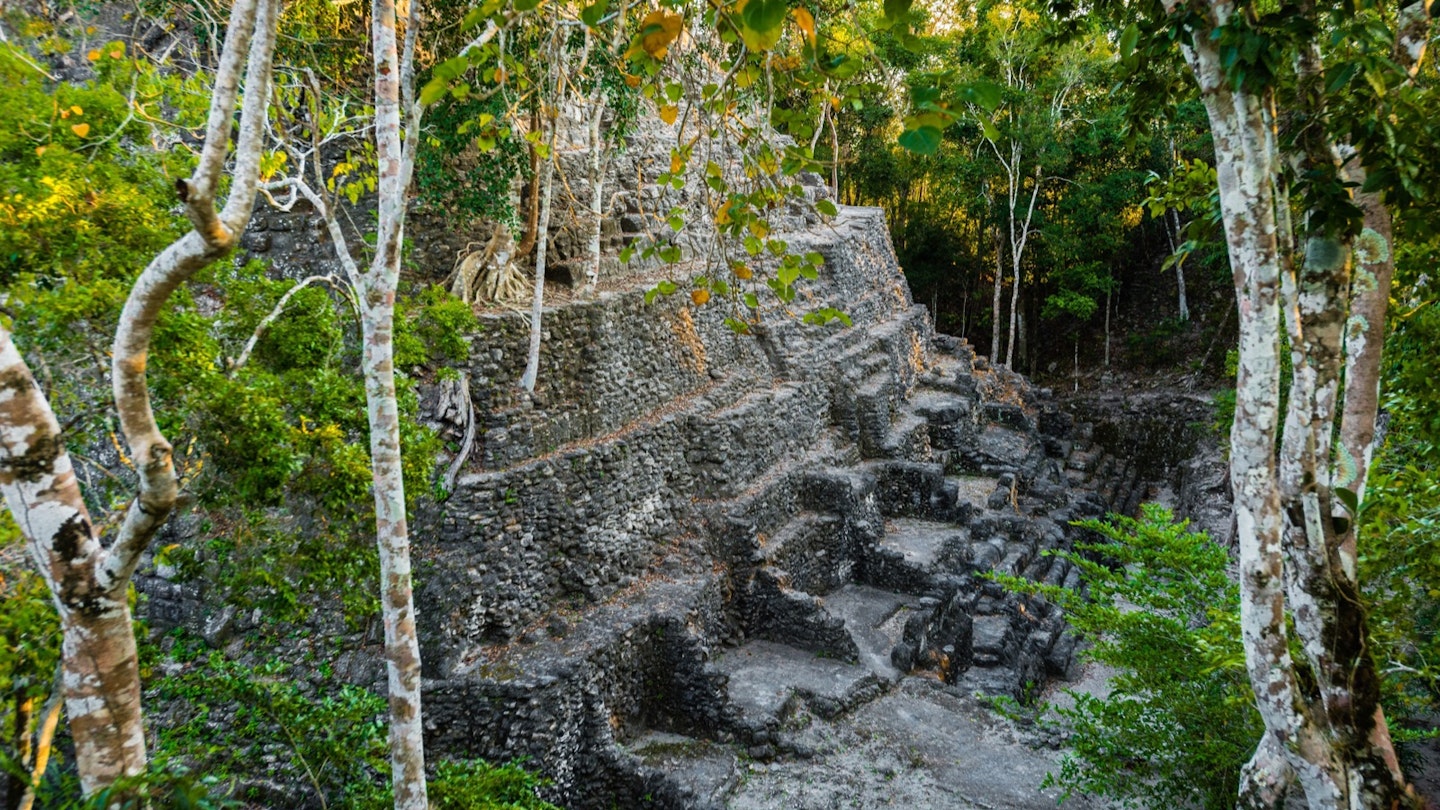Visiting El Mirador: A Journey into the Heart of Maya Culture
Visiting the lost city of Guatemala’s El Mirador requires time, planning, and investment, but the reward for those who embark on this adventure is profound—a chance to witness one of the most remarkable treasures of Maya culture.
The unparalleled vistas nestled deep in the Petén jungle in Guatemala offer a fascinating glimpse back in time.
Above the Canopy
“Next time,” I tell myself as the helicopter lifts off, hovering momentarily just above the ground before ascending skyward. “I’ll opt for the hike.” A week-long trek through unspoiled jungle, stopping at ancient ruins that few people—even those passionate about ruins—will ever encounter.
The Maya must have traveled along a spiderweb of raised roadways known as scabe, now swallowed up by thick jungle over the years. Though flying by helicopter may seem exhilarating, it feels somewhat like a shortcut.
Yet, as we breach the tree line, the sight of Lake Petén Itzá fills me with contentment. The patchwork of turquoise and green water, tinged with gold near the shallow shore, captivates the eye. The flight spans nearly an hour from Aeropuerto Internacional Mundo Maya in Flores to the ruins, inviting me to settle in and observe as fields narrow, farms vanish, and eventually, only the expansive jungle stretches beneath us.
No roads.
No fields.
No farms.
Just an endless, enchanting jungle as far as the eye can see.
Finding El Mirador
Then, in the distance, a silhouette on the horizon grows larger as we approach—it’s El Mirador. This site is the largest known pyramid in the Maya world, rivals the size of Egyptian pyramids. Once, the expansive civilization stretched across nearly 10 miles, only rivaled by its vast, abandoned counterpart—Calakmul. Despite lacking a genuine water source and natural resources, scientists remain puzzled over how the civilization at El Mirador thrived.
Presently, no other excavated ruin is as remote or forgotten as this one. Discovered by chicle harvesters, wandering through expansive forest in search of rubber trees, El Mirador remained in the shadows of archaeology until 1926. However, it wasn’t until 2003 that genuine research commenced on this site, just four miles south of the Mexican border. To this day, only a minuscule fraction of the structures have been uncovered.
The helicopter banks sharply, and we land in a grassy clearing that appeared from above to be no larger than a bathmat. As the rotor blades come to a halt, the first thing that pierces the silence is… nothing at all.
No distant vehicles. No honking horns. No engines. Just the serene sounds of the forest—cicadas buzzing, the wind rustling through leaves, and the distant ‘thunking’ of an oscillated turkey.
Exploring El Mirador
With just four hours to explore the ruins, my guide provides a quick overview, and we set off, trudging through muddy paths for nearly a mile to reach La Danta (the tapir), the 230-foot pyramid visible from the air.
The guide highlights the newly uncovered sections—a stunning stucco frieze, dating back to 300 BC, illustrating the story of the Hero Twins, Hunahpú and Ixbalanque, who are central figures in Maya creation mythology. Emerging on either side are shallow ‘swimming pools’, believed to represent the waters through which the twins swam.
There’s a disconcerting feeling about witnessing such intricate artistry in a place still shrouded in roots, vines, and rubble—a reminder that history’s remnants might predict our future. Will we face a similar fate?
The jungle canopy provides a touch of coolness, yet after 15 minutes of trekking, I’m drenched in sweat. My guide identifies breadnut trees, staples for both the ancient Maya and modern rural communities. Birdsong fills the air as I observe one stunning avian after another.
We navigate a steep incline where criss-cross patterns mar centuries-old chicle trees. Then, before us stands the grand pyramid of El Mirador, La Danta.
The Ascent
Unlike the unbroken rise of the Giza pyramids, El Mirador’s structures are uniquely tiered. First, I ascend a broad base shrouded in jungle, nearly distinguishing it from nature without the guide. Moving to the mid-section, the structure resonates with a true pyramid feel, albeit largely untouched.
Finally, panting, yet exhilarated, I reach the final section where excavated stones break through the trees, revealing their ancient craftsmanship.
Wooden steps lead up the pyramids, minimizing human footprint damage. By the halfway point, I find myself above the tree line, observing the sheer expanse of the jungle below. Moments later, I reach the pinnacle—a windy, sun-drenched summit offering a 360-degree view of unblemished land, still home to jaguars, ocelots, tapirs, coatis, and oscillated turkeys.
On clear days, with binoculars, one can spot Calakmul to the north. My guide points out other hills in the landscape—ruins obscured by time. I ponder what it must have been like centuries ago when vibrant towns and bustling cities filled the region, home to hundreds of thousands.
I quietly savor my lunch, feeling humbled to be in such a historical and sacred place. It’s a similar awe I experience when gazing at a dark night sky that reveals an infinite array of stars.
Due to the photos and rising heat, we have exceeded our planned timeline, and the sky begins to cloud. Our guide states it’s time to return, yet a part of me wants to linger.
Next time, I promise myself, I’ll hike here and immerse in this extraordinary place for the full week. Four hours simply isn’t enough.
Make It Happen
TAG Airlines – Hincapie Ave & 18th Street, Zona 13, Ciudad Guatemala 01013
+502 2380-9400 (Guatemala City); +502 4218-5485 (Flores, Petén)
$399/person, includes box lunch, transport to/from Flores, and a guide; $580/person from Guatemala City





